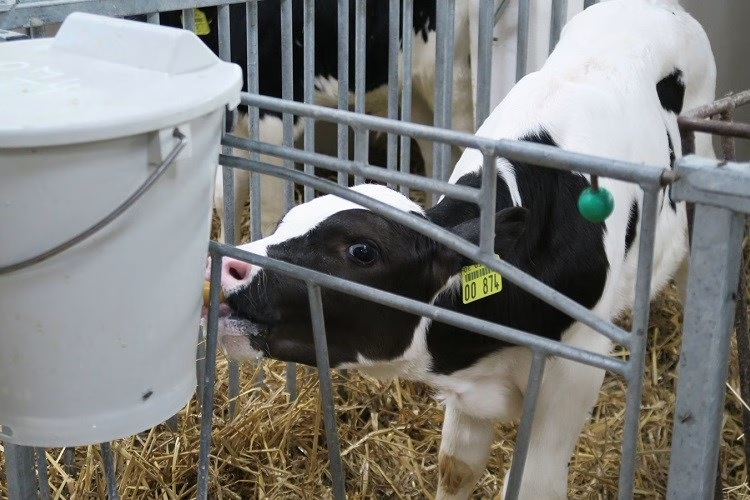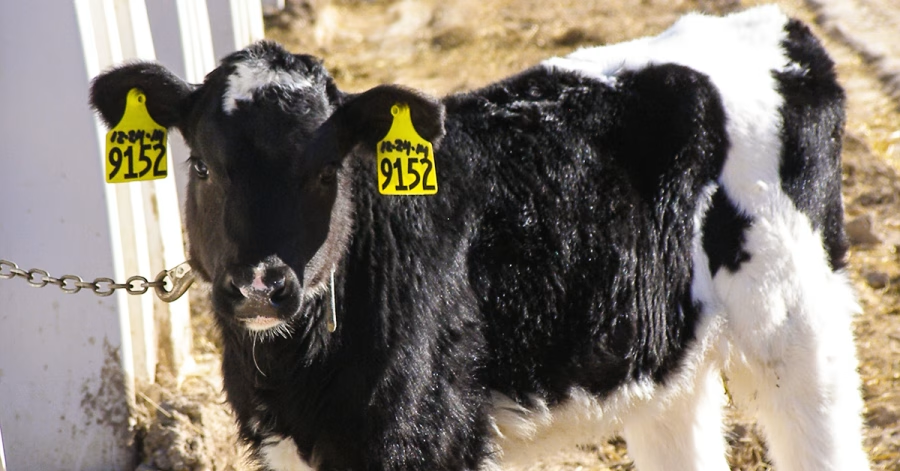Can yeast supplements for pregnant cows boost calf health? Find out if you’re maximizing your herd’s potential with these surprising discoveries.
Summary: The study evaluated whether Saccharomyces cerevisiae var. bouldarii CNCM I-1079 (SCB) supplementation in cows during late gestation affects the immune function of their calves. Analyzing factors like IgG concentration, oxidative burst, and phagocytic capacity, the study found no significant differences between the treatment and control groups. Yet, variations in T cell percentages indicated SCB’s potential influence on immune components in gender-specific responses. Female calves showed higher percentages in CD21 and CD32 markers, while B cell functions remained unchanged. These findings call for a deeper understanding of SCB’s role in calf health. Known for its probiotic properties, SCB improves gut health, milk yield, reduces stress, and enhances immunity in dairy cattle. The study involved 80 Holstein cows, with 40 receiving SCB supplementation and 40 as controls. Findings suggest that SCB may alter immune functions that are not fully understood. Dairy producers should consider SCB supplementation as part of a larger strategy to optimize herd health.
- Research examined the impact of SCB supplementation in cows during late gestation on calf immune function.
- No significant differences were found in IgG concentration, oxidative burst, and phagocytic capacity between SCB-supplemented and control groups.
- Variations were observed in T cell percentages, indicating potential gender-specific immune responses influenced by SCB.
- Female calves exhibited higher percentages in CD21 and CD32 markers compared to male calves.
- No changes were detected in B cell functions between the two groups.
- SCB is recognized for enhancing gut health, milk yield, stress reduction, and immunity in dairy cattle.
- Further research is needed to understand SCB’s role fully in altering immune functions in dairy calves.
- Dairy producers are encouraged to consider SCB supplementation as part of a broader herd health optimization strategy.

Have you ever wondered whether there is a secret ingredient that might improve the health of your calves straight from birth? Dairy producers prioritize the health and vigor of their newborn calves. Muscular, healthy calves are the foundation of a successful dairy farm, yet obtaining them might seem like solving a complicated problem. One fascinating aspect of this puzzle might be yeast supplements. Recent research has examined the impact of Saccharomyces cerevisiae var. boulardii (SCB), a kind of yeast, on pregnant cows and their calves, yielding encouraging results.
Unlocking the Power of Probiotics
Yeast supplements, mainly Saccharomyces cerevisiae var. boulardii (SCB), have acquired popularity in dairy production. SCB is a yeast strain noted for its probiotic properties, which thrive in the gastrointestinal tracts of both people and animals, providing health benefits. SCB supplementation improves gut health and production in dairy cattle by stabilizing gut flora, improving nutrient absorption, and encouraging efficient digestion.
General Benefits of Yeast Supplements:
- Enhanced Immunity: Yeast supplements strengthen the animal’s immune system, making it less vulnerable to illnesses and infections.
- Increased Milk Yield: Cows may produce more milk with better digestion and nutritional intake.
- Stress Reduction: Healthy gut flora reduces stress and improves overall metabolic performance, resulting in calmer and more productive animals.
- Better Nutrient Utilization: Improved digestion ensures that animals get the most out of their meal, potentially lowering total feed expenditures.
In summary, including SCB and other yeast supplements in the diet of dairy calves may result in healthier animals, increased output, and cheaper operating expenses. As many dairy producers have discovered, a slight change in dietary supplements may generate significant rewards.
Bouncing Immunity: How SCB Supplementation Transforms Calf Health
The research sought to determine the effects of Saccharomyces cerevisiae var. boulardii CNCM I-1079 (SCB) supplementation during late gestation on the immunological function of the children. A total of 80 Holstein cows were split equally into two groups: 40 got SCB supplementation, and 40 acted as controls. Their immune function was then evaluated using various blood samples and immunological parameters.
To guarantee a thorough and fair evaluation, the cows in the research were carefully screened by numerous critical factors before being assigned to study groups. The factors included the preceding 305-day milk output, parity, body condition score, and body weight. By doing so, the researchers hoped to reduce any pre-existing differences that would distort the data, allowing any detected benefits to be ascribed to the SCB supplement.
Once the calves were delivered, their first feeding was closely monitored. Each calf received a colostrum replacer in a liquid volume comparable to 15% of its birth weight across two feedings. This was done to meet the goal of the level of immunoglobulin G (IgG), which is 300 grams. Colostrum is essential for the passive transmission of immunity, and by employing a high-quality replacer, the researchers hoped to standardize the calves’ early-life immunological state, allowing for a more accurate assessment of the maternal SCB supplementation.
Unraveling the Immune Puzzle: Surprising Discoveries in Calf Health
This research provides a detailed look at the effect of Saccharomyces cerevisiae var. boulardii CNCM I-1079 supplementation during late gestation on offspring immunological function. The findings are fascinating and demand further investigation. There were no significant variations in IgG concentrations, oxidative burst capability, or phagocytic capacity across the therapy groups. This suggests that, on the surface, SCB supplementation does not seem to influence these features of the calves’ immunological response. But don’t be fooled; the narrative becomes more intriguing.
Things began to become attractive in the T cell and B cell activities, which revealed significant disparities. Calves in the control group exhibited a larger proportion of T cells expressing WC 1.1 (34.5% vs. 23.1%) and WC 1.2 (36.3% vs. 21.4%) markers than those in the SCB-supplemented group. Female calves had more significant percentages of CD21 (7.0% vs. 4.3%) and CD32 (8.14% vs. 5.1%) markers in B cells than males.
So, what are the practical implications of these variances for dairy producers like you? The findings show that, although SCB supplementation may not directly improve particular immunological parameters, it may alter other subtle elements of immune function that we do not entirely understand. Consider these discoveries one piece of a much more giant jigsaw. While SCB supplementation may not be a game changer for all immunological measures, it is not without value. As a result, even if you don’t plan to add SCB to your cows’ diet right now, keeping an eye on future studies in this area may help you make better-informed choices.
The Bottom Line
The research on SCB supplementation during late gestation in dairy cows yielded some fascinating results. Although the results did not show significant improvements in immune function metrics such as IgG concentration, oxidative burst capacity, or phagocytic capacity, the higher percentages of specific T cell markers in control calves and the significant differences in B cell marker percentages between female and male calves warrant further investigation. Dairy producers should evaluate the nuanced results of such research. While SCB may not be a game changer in raising calves’ immunity right away, it may have the potential for additional advantages and uses. As usual, ongoing study and adaption of tactics to your farming practices may aid in optimizing herd health.













